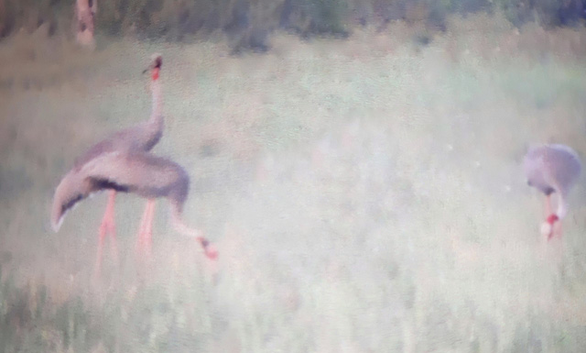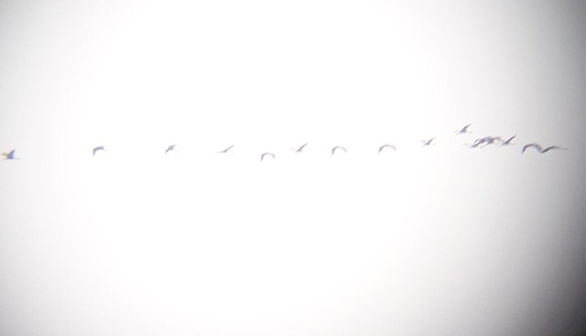Red-crowned cranes, an endangered bird species listed in the International Union for Conservation of Nature (IUCN)’s Red List of Threatened Species, were spotted at the Tram Chim National Park in Dong Thap Province, located in southern Vietnam, after one year of disappearing from the area.
Three red-crowned cranes were seen perching at Tram Chim on Friday afternoon, confirmed Le Thanh Cu, deputy director of the nature reserve.
Do Minh Chanh, a guard at the Tram Chim National Park, said the family of three were sighted in this area from 2017 to 2019.
However, no red-crowned crane was seen at Tram Chim, as well as other locations in Vietnam, in 2020.
The cranes usually descend on the park from December to May, which is southern Vietnam's dry season, to forage and mate prior to the onset of rainy weather, according to news site VnExpress.
The birds may only stay in Tram Chim for a few days this year, as it has already been April, said Nguyen Hoai Bao, deputy director of the Center for Forest and Wetland Research.
|
|
| Red-crowned cranes are spotted flying above Phu My Lepironia articulate grass fields in Kien Giang Province, southern Vietnam. Photo: Hoang Tuan |
“As it has started raining in the dipterocarp forest in Cambodia, the grass foliage there began to prosper, bringing in insects and frogs," Bao explained.
"Hence, the [red-crowned cranes] tend to return there to hunt and save energy for the mating season."
The consistently high water level in the forest during past months, which did not fully recede until April, had hampered the normal hunting activity of the red-crowned cranes and deterred the birds from revisiting the national park in 2020, he pointed out.
“It’s still too early to celebrate," Bao said.
"We are working to change the way the local system is managed so that the habitat for the cranes is recovered, but it may take years."
The red-crowned cranes have returned to the area for about half a month, according to Lam Hong Tuan, deputy head of the wildlife conservation management authority at Phu My Lepironia articulate grass fields in the Mekong Delta province of Kien Giang.
This year, they have abandoned the regular Lepironia articulate grass fields and retreated to more remote areas, Tuan added.
“They head to Phu My during the day, then go to Anlung Pring in Cambodia in the afternoon,” Tuan said.
“They will leave when they see humans.”
Like us on Facebook or follow us on Twitter to get the latest news about Vietnam!






















































